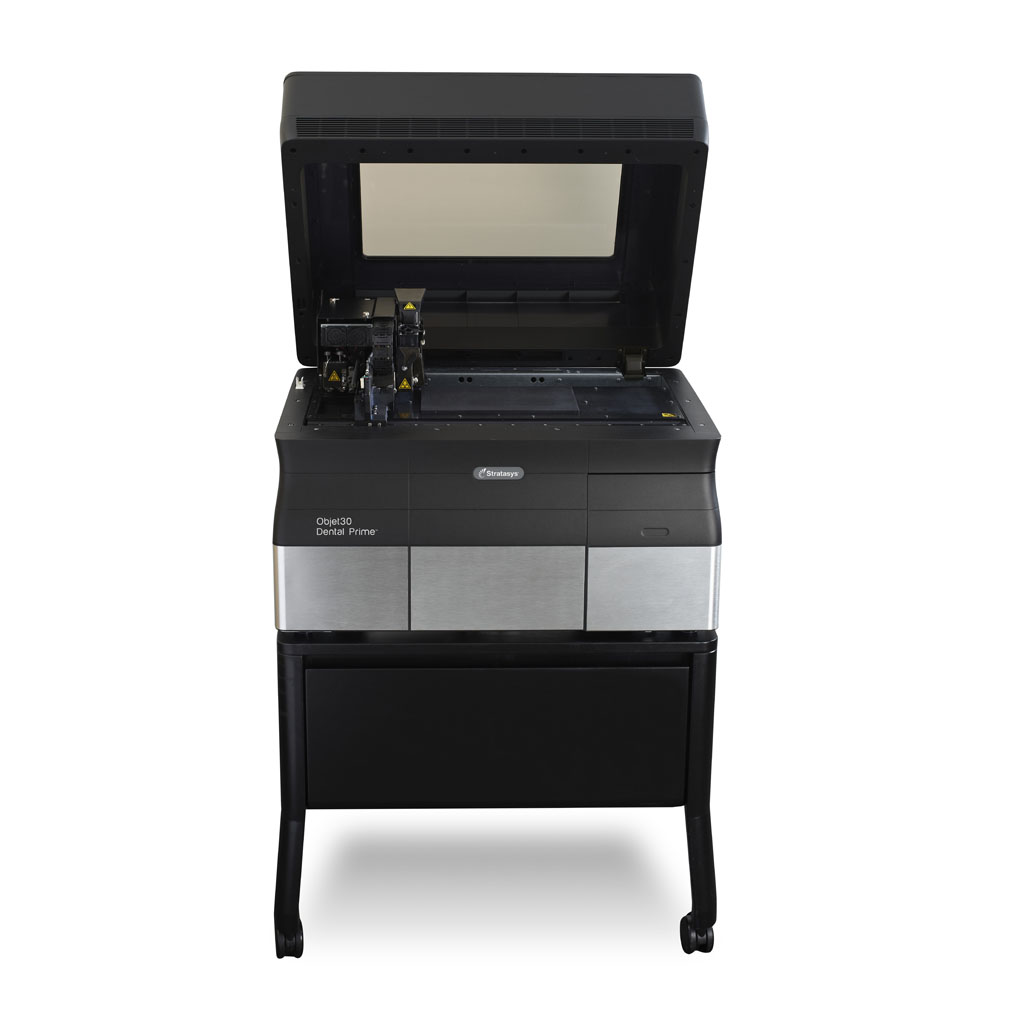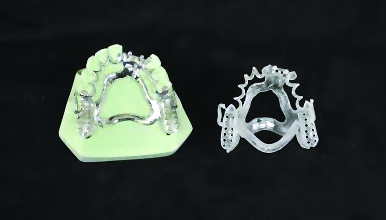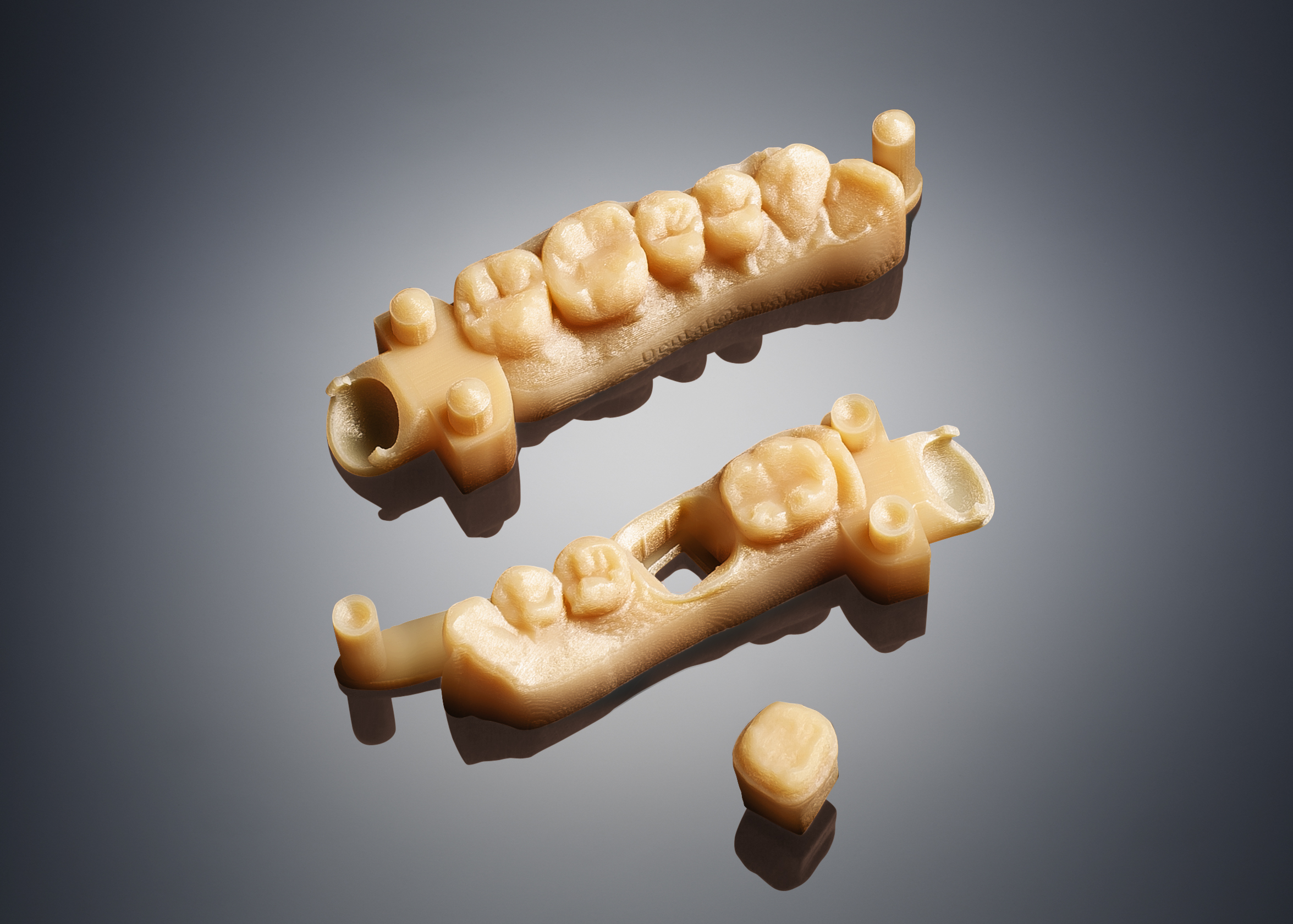
Stratasys made a huge move this week, disguised as a 3D printer announcement.
The company announced the availability of the Objet 30 Dental Prime 3D printer, a machine designed for use in smaller dental labs. The machine is actually a variant of the popular Objet 30 line, a small 3D printer using their inkjet-style PolyJet high-resolution 3D printing technology.
The machine is primed to use a selection of dental-specific resins that can be used to directly 3D print a variety of orthodontic items by dental labs. Three materials are featured:
- VeroDentPlus (MED690), a dark beige material that creates amazingly fine features and finish, and offers excellent strength, accuracy and durability.
- VeroGlaze (MED620), an opaque material with A2 shading designed to provide the best color match in the industry. Ideal for veneer try-ins and diagnostic wax-ups, VeroGlaze is medically approved for temporary in-mouth placement, up to 24 hours.
- Clear Bio-compatible (MED610), can produce orthodontic appliances, delivery and positioning trays and surgical guides for temporary in-mouth placement.
But the interesting part is how this machine may change the workflow for many dental labs. The machine is said to be priced lower than other dental alternatives, offering the possibility for more labs to make use of the technology, but it’s more than that.

Stratasys is promoting the idea of “digitizing” the dental lab. Previously, dental labs would require physical casts of patient mouths by dentists, which would then be converted into 3D models for printing – or simple casting. This required the lab to store perhaps hundreds of historical casts in case of future use.

The new approach is to have an entirely digital workflow. Starting at the dentist, who would capture the 3D model directly with appropriate 3D scanning gear, the digital model would then transfer to the dental lab for almost immediate 3D printing. Orthodontic appliances, delivery trays and retainers, can then be created very quickly. Even better, no physical casts have to stored, as the information is now entirely digital.
The effect on dental labs could be significant, as not only the printer is less expensive, but the cost of the workflow may drop significantly. If this is indeed the case, then we may see a large number of dental labs moving into the digital realm using Stratasys gear.
Via Stratasys

